OM System OM-3 vs OM System OM-5: is the OM-3 really worth upgrading for?
The OM System OM-3 has caused quite a stir, but is it really THAT much better than the existing OM-5? Let’s see!
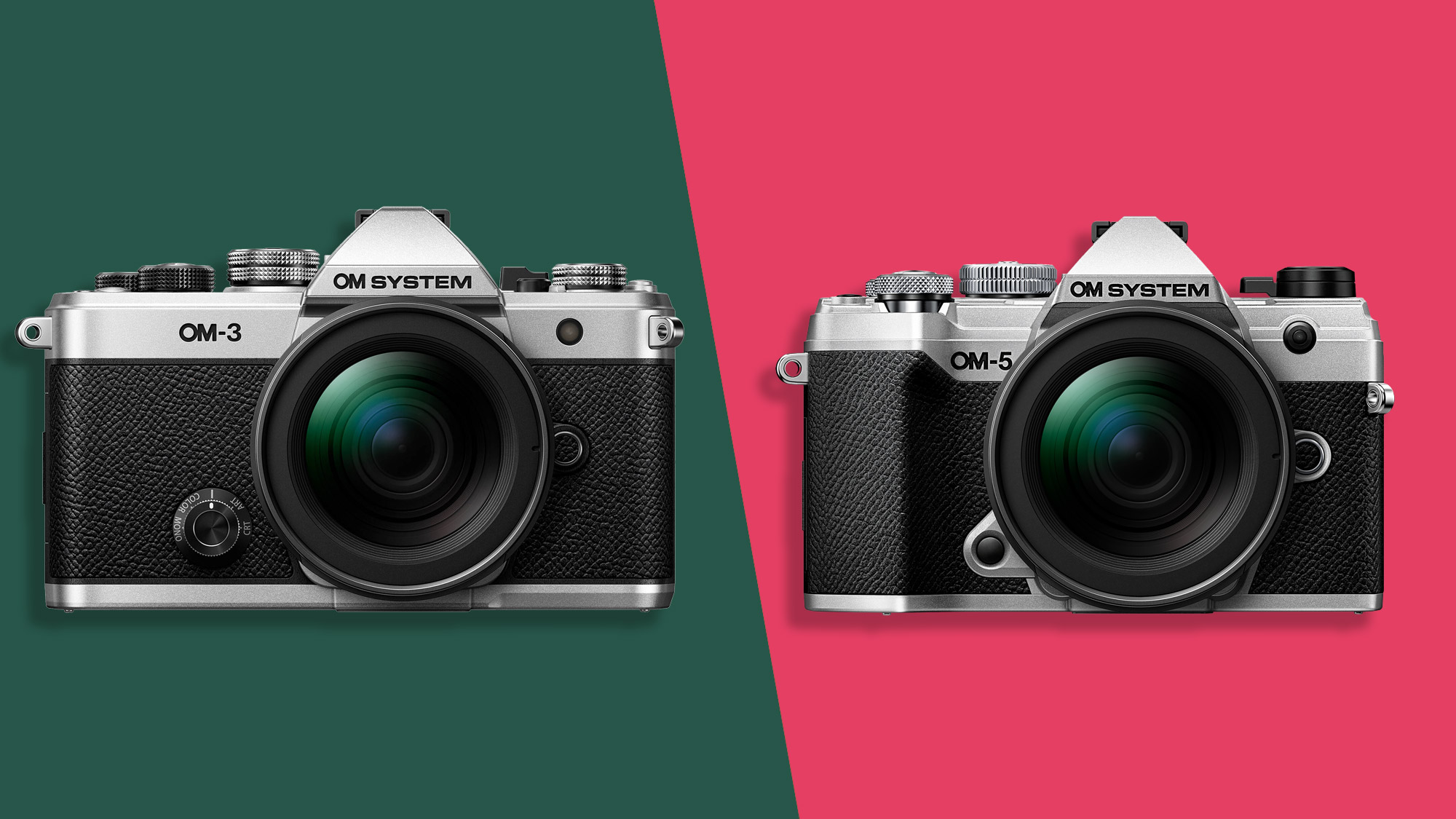
2025's best-looking camera, the OM-3 blends retro looks with serious power. It features OM System's speedy stacked sensor, best-ever autofocus performance, and latest computational photography modes, and is a level above the OM-5 in multiple ways.
For
- Stunning design
- Speedy stacked sensor
- Snappy quad pixel autofocus
- Improved computational photography modes
Against
- 20MP sensor only
- Pricey when compared to other brand rivals
- No grip, nor an option for one
- Doesn't handle great with large lenses
Our favorite travel camera, the OM-5 is small but mighty, with 20MP Micro Four Thirds sensor, excellent in-body image stabilization and wide lens choice. However, its features are all previously generation versus the pricier OM-3.
For
- Small size
- Powerful features
- Excellent stabilization
- Great lens line-up
- Clever computational shooting modes
Against
- Lesser build quality
- 4K 30p video adequate but no more
- Too small for bigger Pro lenses
- EVF resolution is only average
The original Olympus OM-1 was one of the most beautiful cameras of its time, born in a golden era for 35mm analog SLRs. Now OM System has revived this classic camera’s style with remarkable fidelity and attention to detail, while packing it with the high-speed stacked sensor and quad-pixel AF system of the flagship OM-1 Mark II, not to mention a raft of computational photography features.
But OM System already has a compact retro-styled DSLR-lookalike – the OM-5. This also has a 20MP sensor and rather lovely retro styling. It’s also smaller, lighter and much cheaper. The OM-5 doesn’t have all the technological bells and whistles of the OM-3, but if you’re just looking for a stylish, compact and robust camera for travel and outdoors, the OM-5 might be all you need.
So what, exactly, does the OM-3 have that the OM-5 doesn’t, and is it enough to tempt you into spending a lot more cash on a bigger and heavier camera with the same resolution and some computational and video features that you might not care about very much?
We think there are five key areas where the OM-3 is a very different camera to the OM-5. You may not be interested in any of them, or just one or two of them, but overall we think they add up to a very substantial step forward in handling, features and capabilities. Yes, both of these cameras are 20MP weather-sealed outdoor cameras with a strong retro vibe – but that’s just about all they have in common, as we shall see.
1. Design and construction
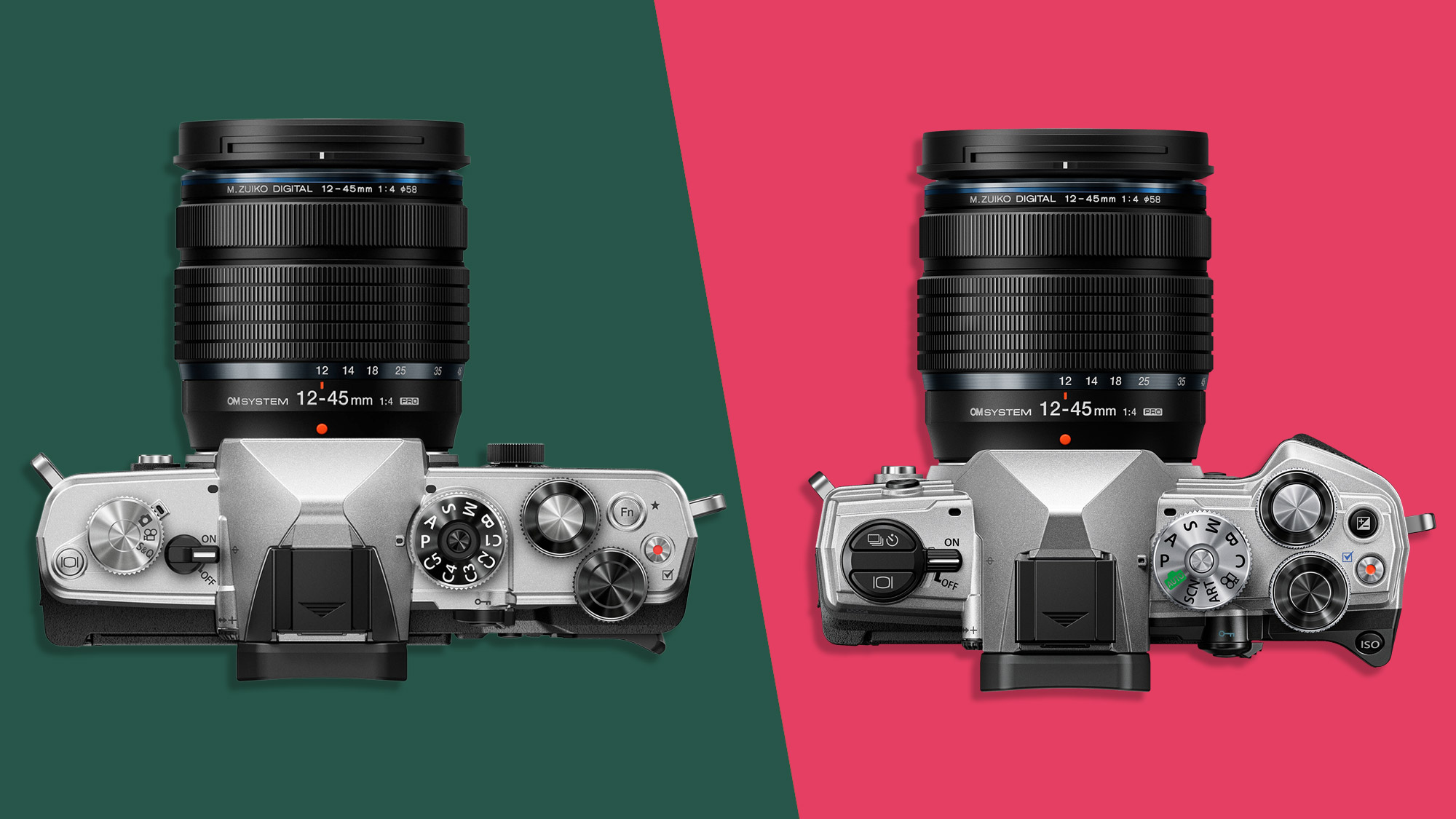
They might seem to occupy a similar position in the OM System camera range, but the OM-3 is physically and stylistically very different to the OM-5. The OM-5 is a very compact, well designed DSLR-style camera, but while it does have a distinct retro vibe, the OM-3 amps this up to the max. It closely follows the design of the classic Olympus OM-1 and OM-2 film cameras, right down to its black and silver finish and minimalist, rectangular shape. This is how film SLRs used to be, before the revolution in electronics (and the idea of having a grip for your fingers).
The OM-3 is a bigger and heavier camera, too, and the most obvious thing is the difference in width. The OM-3 is 14mm wider than the OM-5. It’s also a little taller, though not quite as thick in the body. And where the OM-5 is a rugged, weatherproof camera, it’s constructed from plastic and feels it. The OM-3, however, has a magnesium alloy body and weighs a whisker under 500g – 82g more than the OM-5.
The bigger body houses a bigger BLX-1 battery with a capacity of 590 shots, where the OM-5 has a smaller BLS-50 battery rated at 310 shots. The controls are different too. The dials on the OM-5 are very good, but those on the OM-3 have a real premium feel. It also has a physical color dial on the front, harking back to the much-loved Olympus PEN-F, for those who want quick access to OM Systems’ underrated Art Filters and custom color and black and white modes.
If you’re the sort of photographer who values looks and feel as much as technical specifications, then the design of the OM-3 alone could be enough to make it worth the extra outlay. But there’s a lot more to the OM-3 than just looks…
2. The newer stacked BSI sensor
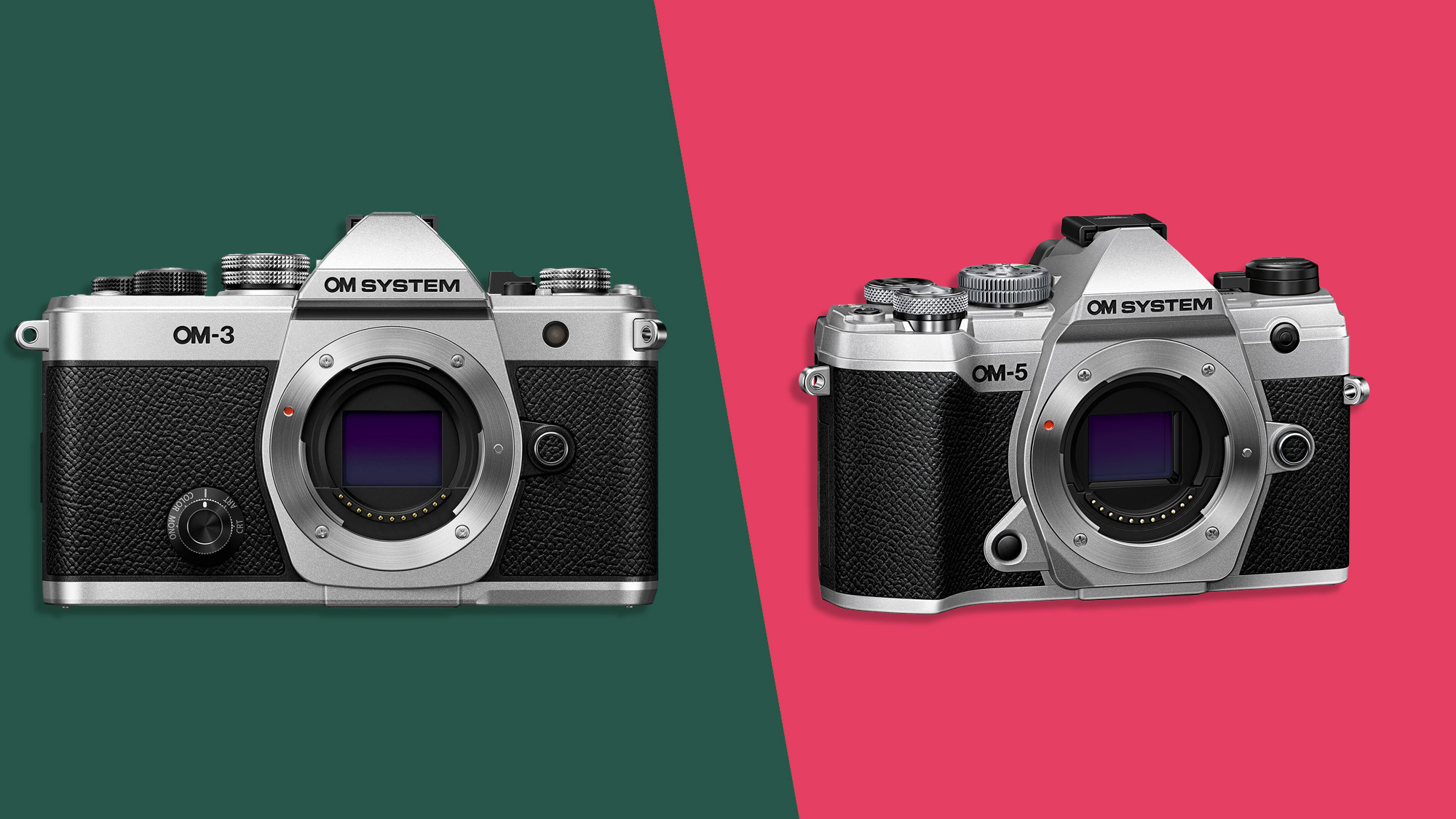
Key specifications for any camera always start with the sensor size and resolution. The OM-3 and the OM-5 both have a 20MP MFT sensor, and if you’re primarily a stills photographer shooting mostly static subjects, that might be the end of the story.
But although the OM-3 sensor offers the same resolution, it’s a much more modern ‘stacked’ back-illuminated design which has a profound effect on the OM-3’s capabilities. First, it allows fearsome continuous shooting speeds in a different league to the OM-5’s. Second, it ushers in substantially improved video and autofocus capabilities, which we’ll look at separately.
Effectively, the OM-3 is using the sensor and processing tech from the flagship OM-1 Mark II, so that’s where the speed comes from. Would you use the OM-3 for sports and action photography? Maybe not – the OM-1 Mark II is a much better shape for that. But the speed is there if you need it. The OM-5 can chug along at 10fps, but if you want continuous AF that drops to 6ps. The OM-3, however, can hit a ludicrous 120fps with its electronic shutter, and 50fps with continuous AF, and with a much bigger buffer capacity than the OM-5 at the same 10fps shooting speed.
The OM-3’s new sensor brings other, subtler advantages. The more efficient light capture of the BSI design brings, according to OM System, superior high ISO performance and improved dynamic range too.
3. Computational photography
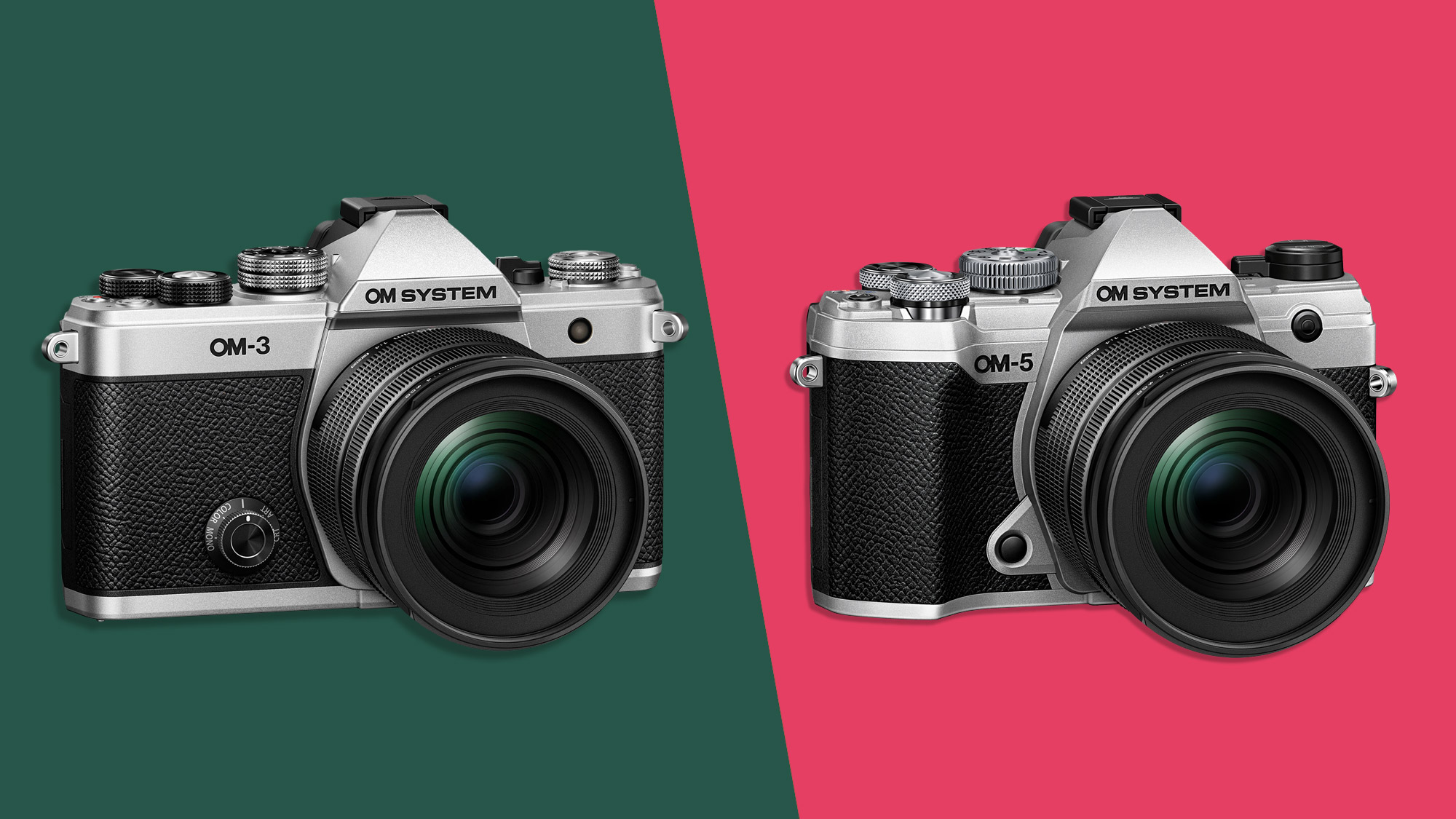
If you’re new to the OM System brand, you’ve probably heard a lot about its ‘computational’ imaging, so let’s look at three key computational features and how they differ between the OM-3 and OM-5.
First, there’s the High Res Shot mode. These are pretty common amongst mirrorless cameras now, and work by merging a series of frames shot with tiny sensor movements to record much more detail than a single capture. The OM-3 and OM-5 can both quadruple resolution, capturing 80MP images on a tripod, or 50MP images handheld. There’s no change there.
They also offer a unique Live ND feature which merges a whole series of images to produce the effect of a long exposure. It’s very effective, and very useful in landscape photography – but there is a difference in what these cameras can achieve. The OM-5 offers a maximum 4-stop ND effect, but the OM-3 increases that to 6 stops. Is that enough for daytime long exposures? It depends on how long you need them to be, but it’s a definite improvement.
Now the OM-3 has a third feature which you don’t get on the OM-5, and it’s particularly interesting. It’s called Live GND, and it replicates the effect of a graduated ND filter for bringing bright skies within the exposure range of the camera, and closer to the brightness levels of the landscape. You can choose the filter strength (up to 3 stops) and softness, just as you can with real filters – but without the expense! This is not a simple software kludge – this is applied at part of the image capture process.
The OM-3 and OM-5 are both rugged, weather-resistant outdoor cameras, but the enhanced Live ND and new Live GND features on the OM-3 make it a clear winner for landscape photographers.
4. Autofocus performance
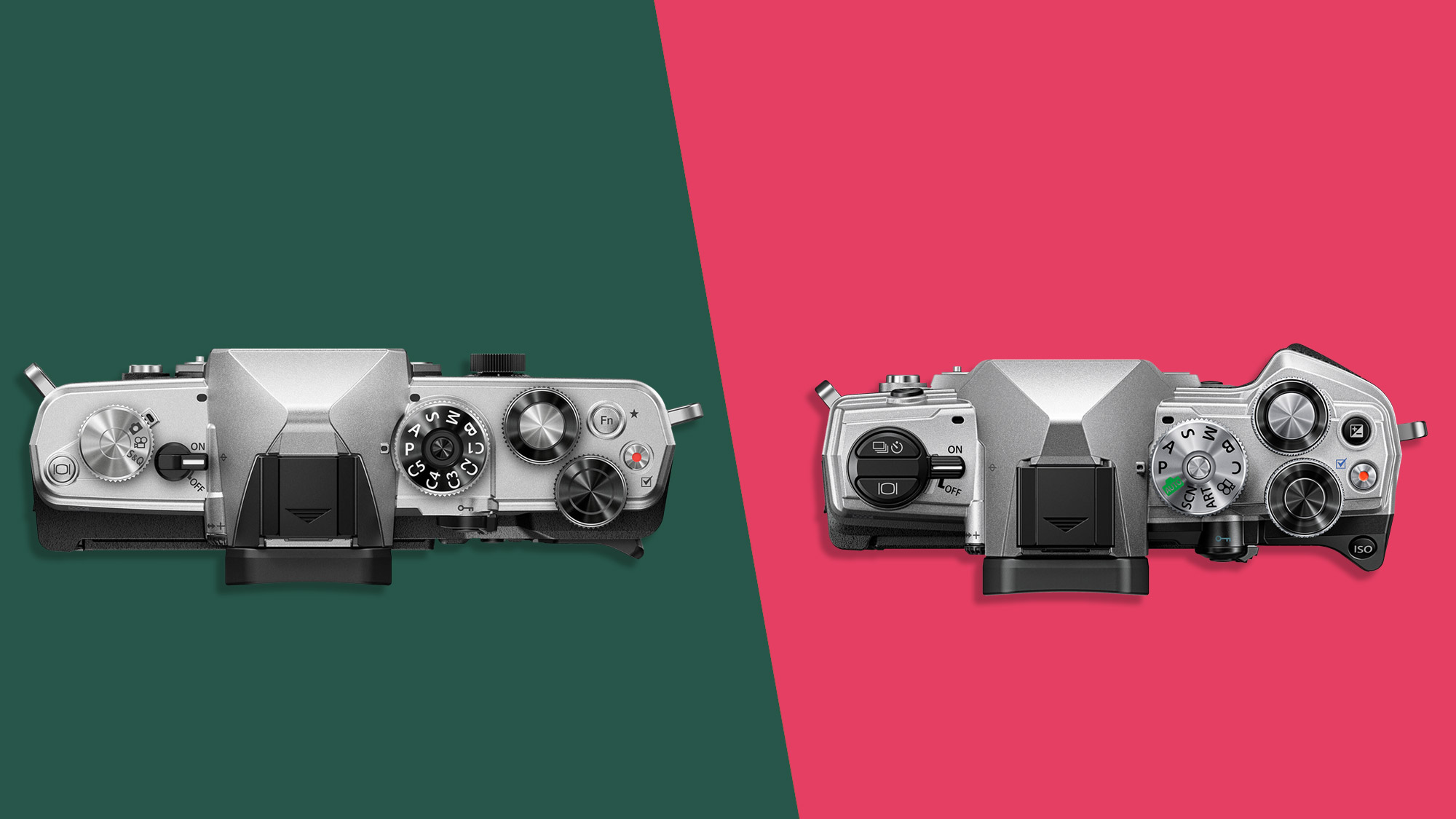
There wasn’t a whole lot wrong with the OM-5’s phase-detect autofocus, but its 121-point selection is distinctly tame by today’s standards and covers most but not all of the frame. The AF system in the OM-3 is a considerable step forward, employing a new ‘quad-pixel’ layout, 100% frame coverage and 1,053 user-selectable AF points.
It does make a difference, even for slow-paced static photography, since the smaller AF points offer more precision. It’s with continuous AF and video that the new AF system really comes to the fore, employing OM Systems’ latest AI subject recognition and all the speed and power of the new stacked sensor.
It’s not foolproof, and some find the older AF system a little more tolerant of backlighting, but the Quad Pixel AF in the OM-3 definitely represents today’s AF technology, whereas the OM-5 is fast and competent in its own way, but from an older generation of AF systems.
Will it matter? It depends on the kind of photography you do, so maybe not. But if you shoot sports, action or wildlife, the OM-3 is a big step forward – along with the hugely improved burst speeds.
5. Vastly improved video capabilities
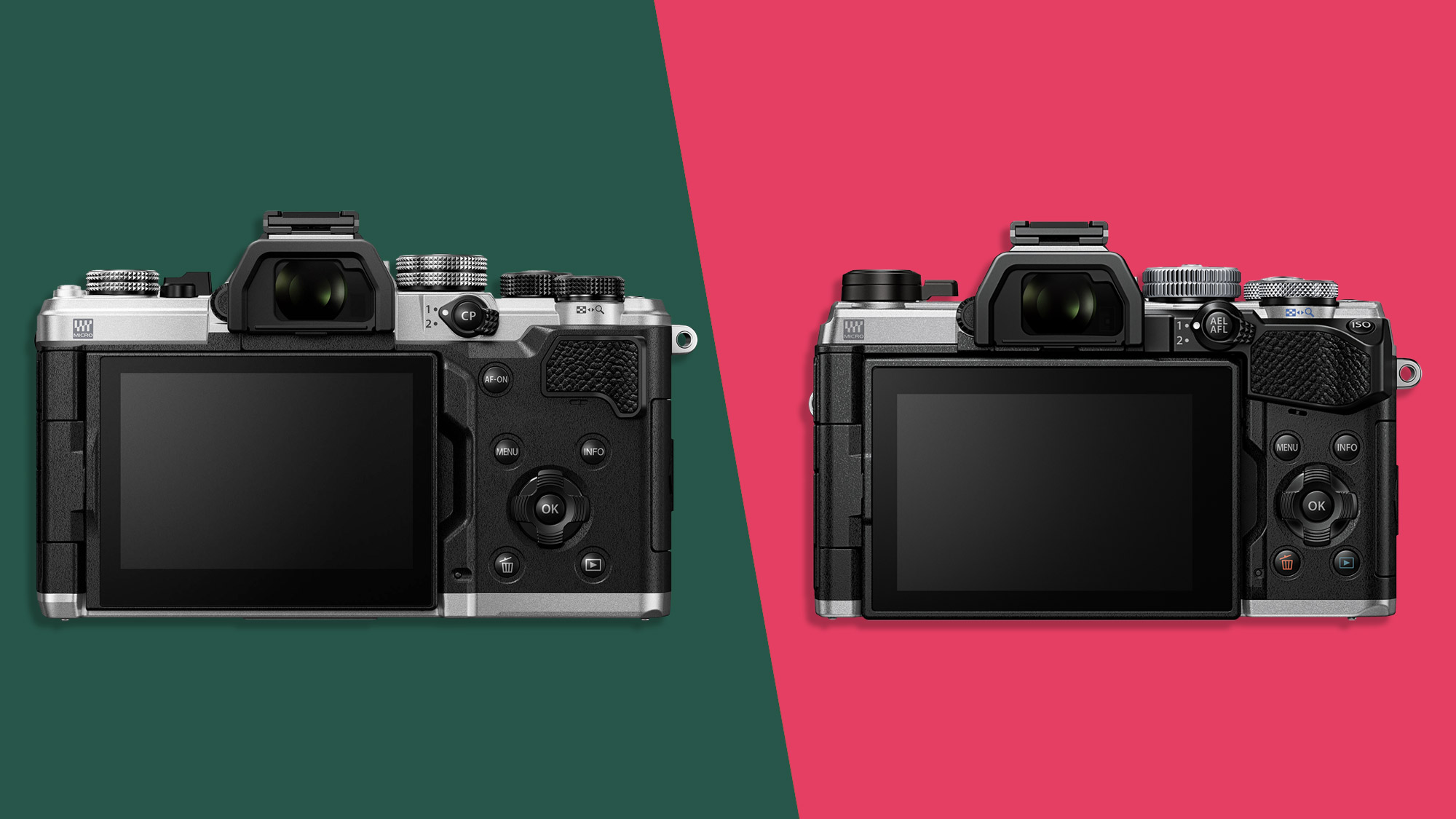
The OM-5 can shoot decent 4K video, helped along by its snappy AF and excellent in-body stabilization. The stabilization in the OM-3 is unchanged, but everything else is upgraded, and in quite a big way.
First, where the OM-5 tops out at 4K 30p, the OM-3 also offers 4K 60p and both 10-bit internal capture and ProRes RAW to an external recorder. Both cameras feature the optional OM-Log400 profile, but the OM-3 adds in two new OM Cinema 1 and OM Cinema 2 profiles. The OM-5 could hardly be considered a convincing hybrid camera, but the OM-3 is different.
Quite apart from its technical improvements, the OM-3 is physically designed with video in mind. A stills/video/S&Q dial on the top gives equal prominence to stills and video capture, and there’s also a headphone port for audio monitoring.
Early verdict
If you already own the OM System OM-5, there are plenty of reasons to splash the cash for the OM-3; it has the retro design edge and next-level build quality, together with a stacked sensor for speedier shooting, the latest quad pixel autofocus system, and improved computational photography. In just about every area, you will notice user experience and image quality improvements.
However, it's not all a one-way street; the OM-5 is much cheaper, has the same resolution sensor, nor is it a slouch, plus it enjoys the same lens selection of the OM-3. It also has a a raised bump on its front for a better grip, plus an optional grip is available to further improve the user experience with larger lenses – currently the OM-3 has neither option and is best used with small lenses.
Overall, there's no doubt that the OM-3 is a sizeable upgrade in many departments. If you can afford it, you'll be happy to have spent the extra money.
Get daily insight, inspiration and deals in your inbox
Sign up for breaking news, reviews, opinion, top tech deals, and more.

Rod is an independent photographer and photography journalist with more than 30 years' experience. He's previously worked as Head of Testing for Future’s photography magazines, including Digital Camera, N-Photo, PhotoPlus, Professional Photography, Photography Week and Practical Photoshop, and as Reviews Editor on Digital Camera World.
You must confirm your public display name before commenting
Please logout and then login again, you will then be prompted to enter your display name.